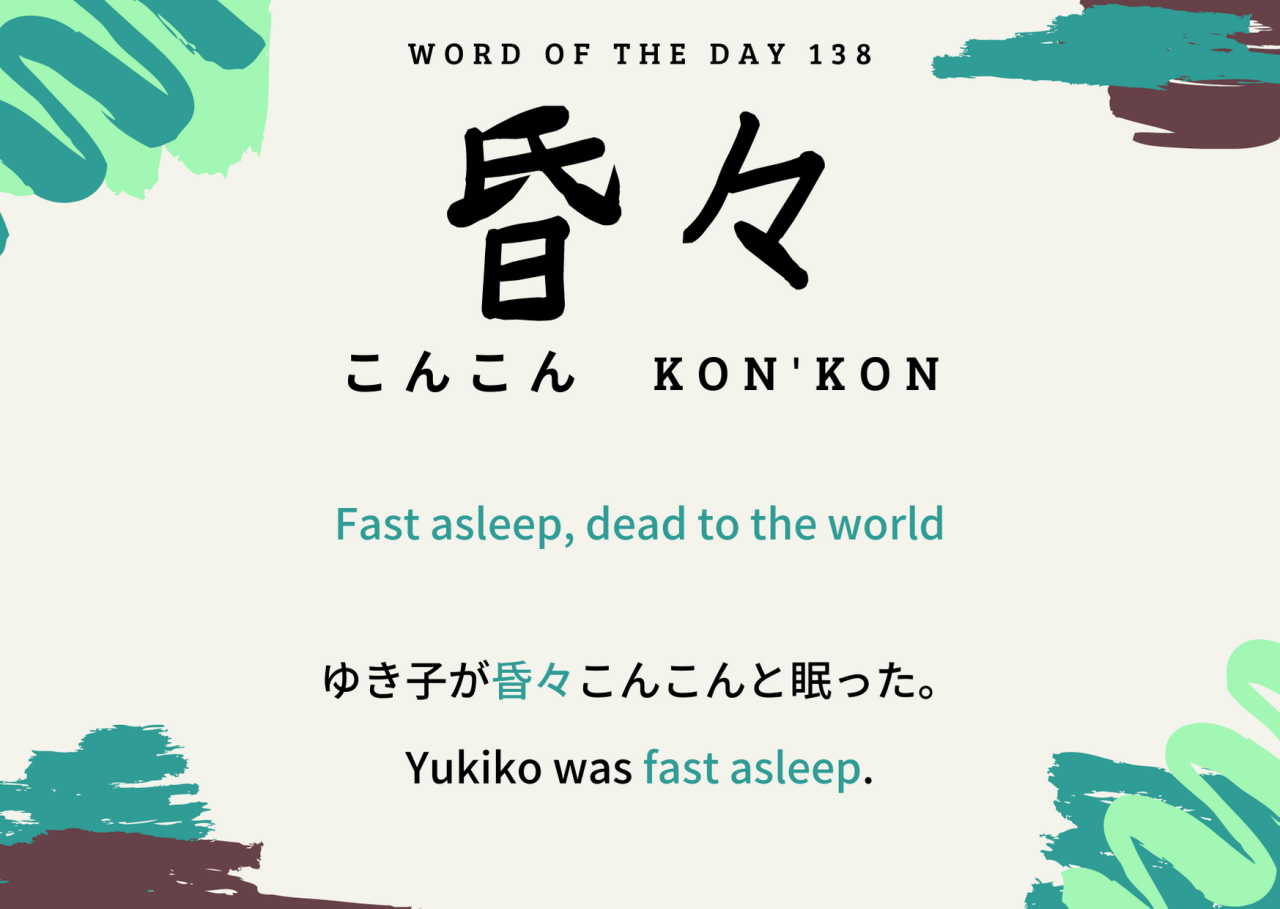JLPT Level: UnlistedOmg I just noticed that the example sentence has こんこん in hiragana beside the kan
JLPT Level: UnlistedOmg I just noticed that the example sentence has こんこん in hiragana beside the kanji. When you copy and paste a sentence that has furigana above the kanji, it will put it as hiragana beside the kanji, and I forgot to go and delete that. /sigh. The correct example sentence is:ゆき子が昏々と眠った。Okedoke. Now that that’s out of the way, let’s get on to this word and its kanji.昏On-yomi: konKun-yomi: kura.i, kureMeaning: dark, evening, duskThis kanji is made of two different parts: 氏 and 日. 氏 represents a person and 日 is the sun. The person is standing above the sun, and therefore this kanji is a pictograph of “the sun falling to a person’s footsteps,” which is a rather pretty way to describe the sun setting. And of course, after the sun sets, it becomes dark, which explains why this kanji means “dark.”Now, why does the word “konkon” mean fast asleep? Well, most people tend to sleep at night haha. Of note, this kanji appears in the word for “coma,” which is 昏睡 konsui. So this kanji has nuances of a very deep sleep. -- source link
Tumblr Blog : omoi-no-hoka.tumblr.com
#japanese#japanese language#study japanese#learn japanese#japanese vocab#japanese vocabulary#study kanji#learn kanji#langblr#studyblr#japanese langblr#japanese studyblr
